[/caption]There’s been a lot of bad news surrounding the development of the Constellation Program of late. We’ve had news of general design flaws, rebelling NASA engineers, failed parachute tests, budget overruns, vibrational issues and job losses. Now we have a new one to add to the mix, the Ares I launch vehicle could bump into the launch tower during blast-off. According to a Florida report, only a tiny gust of wind is required to cause the rocket to hit the tower or scorch it, causing catastrophic failure and/or costly damage to the pad.
You’d be forgiven for thinking Constellation is a failed project, that is obviously going to overrun, obviously going to cost too much and is obviously a waste of time. But forget the media naysayers for a moment. Despite the challenges faced by NASA engineers, a bumpy road on the way to launching the most advanced rocket system ever devised is well worth the ride…
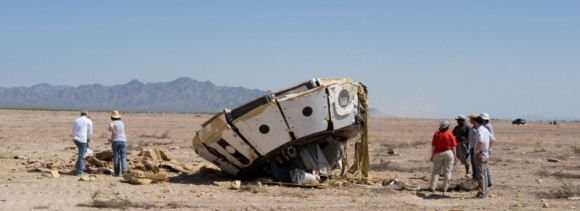
Back in August, I reported on the testing of the Ares and Orion parachute systems. Very little news was available about the Ares parachute successes, so the focus was placed on the spectacular failure of the Orion test vehicle, which fell to the ground like a stone (captured in full video glory). This wasn’t a critical failure of the technology, it was more of an experimental anomaly. After all, isn’t that what test flights are all about?
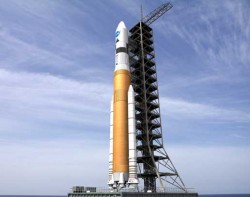
More bad news has come from other areas too. During the transition from the Space Shuttle to Constellation, it was estimated that 8,000 jobs would probably be lost. Even after this projected number was reduced to 3,000-4,000 job losses, US Senator Bill Nelson said that NASA job losses and an increased dependence on Russian space vehicles will result in “generating jobs in Russia.” However, this argument may not hold water for much longer as the Russian Soyuz manufacturer has run out of money.

This headline comes in response to computer models that show the Ares I rocket could get blown into the launch tower during lift-off. Ares I could experience “liftoff drift”, a phenomenon that occurs when the rocket’s solid-fuel motor ignites, making the 309 ft (100 m) Ares I “jump” sideways. If this should occur during a breeze of a little over 12 mph (19 kmh), Ares I could fall into its launch tower, or cause severe and expensive damage to the tower under the extreme heat of its boosters.
“We were told by a person directly involved [in looking at the problem] that as they incorporate more variables into the liftoff-drift-curve model, the worse the curve becomes,” said an anonymous NASA contractor. Contractors are not authorized to talk about Ares development, but the contractor continued, “I get the impression that things are quickly going from bad to worse to unrecoverable.”
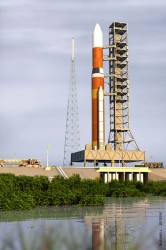
“There are always issues that crop up when you are developing a new rocket and many opinions about how to deal with them,” said Jeff Hanley, Constellation Program manager. “We have a lot of data and understanding of what it’s going to take to build this.”
The Orlando Sentinel also posted information about continuing rifts in NASA pointing out that a growing number of engineers are quitting the Constellation program through fears of unrealistic goals and safety concerns, calling the whole Constellation concept into question.
“If they push hard enough, yes, it will fly,” said one disgruntled NASA engineer working on Ares. “But there are going to be so many compromises to be able to launch it, and it will be so expensive and so behind schedule, that it may be better if didn’t fly at all.”
In my view, any massive project like Constellation will attract its critics. Ares and Orion are new technologies where NASA engineers will have to make some huge strides to make it work. As already mentioned, the Ares rocket system is going to fly, but it might overrun in spending and schedule. However, all these challenges will be worth it when we see the first Ares I launch from Cape Canaveral in six or seven years time.
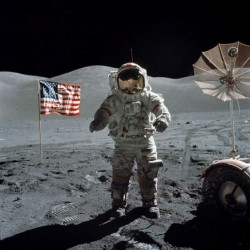
It may not be politically or economically realistic, but more money should be ploughed into NASA and Constellation. This is a momentous challenge requiring a momentous effort from the nation. Let’s just hope some of the spending promises of the presidential candidates last beyond November 4th…
Original source: Orlando Sentinel

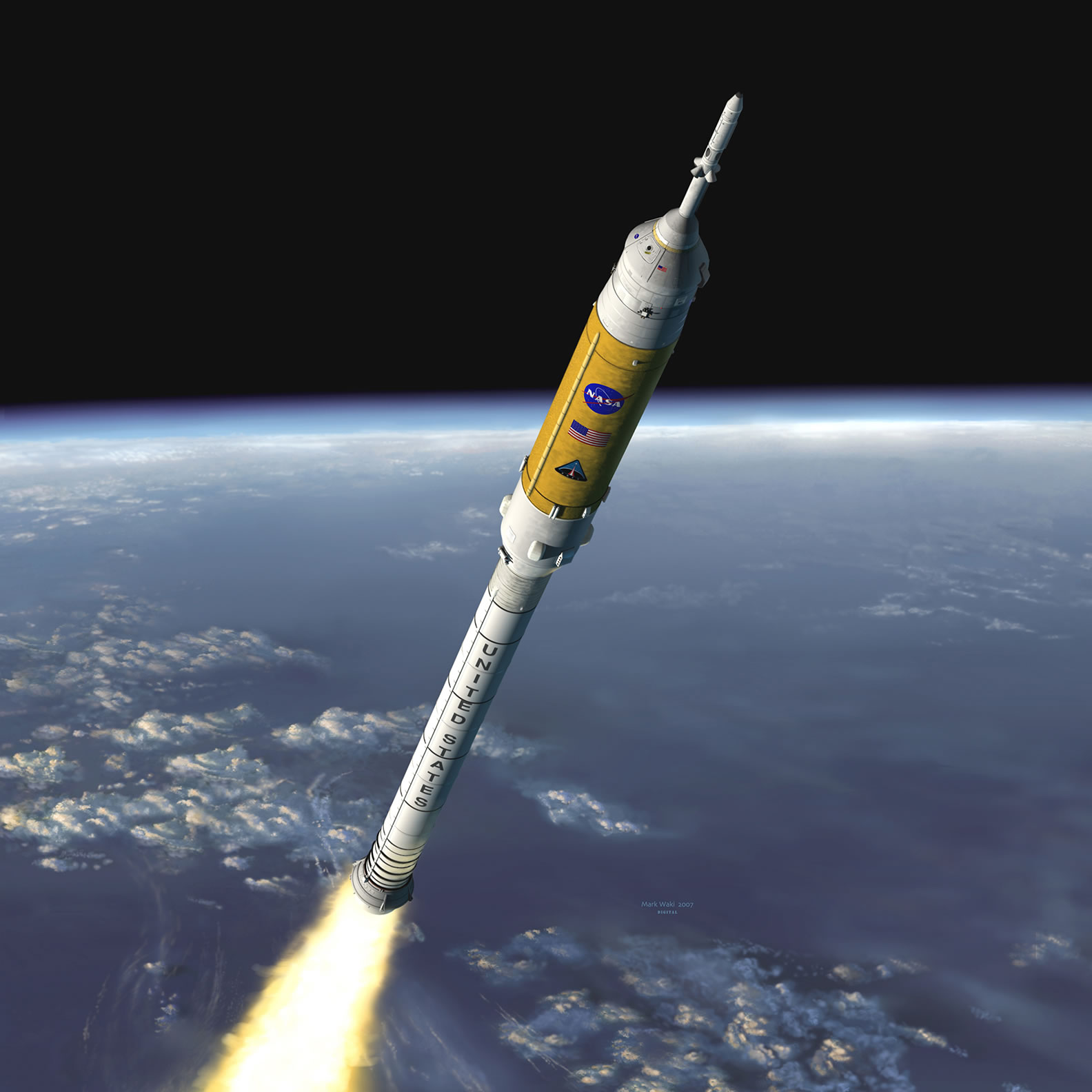
lol, I’ll have to be careful with what I write on Stumble… you should see what I’ve said in the past!
(I hear there are a few spiders up there, at least, they look like spiders: http://www.b5tech.com/shadows/shadowships/shadowbattlecrab.html)
Cheers, Ian 😀
Bloody hell, they have been offered to use Russian rockets at cheaper prices and at the same time offering better reliability ~ Why. Can’t. They?
There were a lot of warnings (in Space Review, for example) that there would be complications with new booster development. This is not just a single Shuttle booster but a whole new system with a learning curve, and a lot not in common with Shuttle. The obvious technical attraction was the high energy available from the solids. It may be that the critics were right…options are more directly Shuttle-derived systems, Atlas or Delta mods, or…Falcon/Dragon if all else fails and Elon keeps going strong. Or perhaps Falcon 9 can launch either Orion or Dragon. The Falcon 9 will be man-rated and Atlas or Delta would have to go that route. We still need the Ares 5 for heavy lift. The Russians have the most reliable and time-tested crew launch systems but the US will not offshore its space tech for reasons of prestige/pride.
Why cant they rely on Russian rockets?
Because their government might hold our access to space hostage for any one of a thousand unrelated issues.
Its nice in a pinch but its not something we’re going to bank our space exploration program on.
Personally I think its much ado about nothing.
We’re barely halfway to the first launch and everyones picking apart every microscopic detail and calling it the end of nasa.
Wind blowing the rocket into the tower?
Really, guys?
Despite the challenges faced by NASA engineers, a bumpy road on the way to launching the most advanced rocket system ever devised is well worth the ride…
While I support the program, I have to say I don’t care about “advanced”. I just just had to get the payload to where it’s supposed to be – and there’s plenty of “obsolete” technology that can do that already.
Above “just just” should be “it just”.
Surely ‘it is a project’ and ‘it will overrun’ are synonymous expressions? There’s a whole field of study called Optimism Bias that deals with this.
Big rocketry development is hard, and We hope Space X and Nasa will succeed.
If Constellation hits a barrage of more problems, they may need to consider using the proposed Direct 2.0 launching system.
Direct 2.0, Direct 20. Direct 2.0.
It’s hardly surprising that an entirely new launch system will have some minor (or even major) hitches during development. That is why it is called, funnily enough, development.
You read the stories of Korolev and Von Braun developing their ‘pride and joys’, and they are beset by problem after problem, issue after issue, and yet they pushed forward relentlessly and virtually single handedly (along with their teams) brought us into the era of space flight. Why should it be any different today with any system worth developing? If we’re pouring the cash in, then we want it to be a significant advance over old technology. With significant advance comes commensurate risk and technical problems. It’s part and parcel.
What we need is some strong characters that can cut through the politics of it all, convince the morons in government of the requirement for continued decent funding, and deliver us the most advanced launch system in the world. It’s overdue…
In responce to Ian’s stumble comment, I’m all FOR space exploration, unless it’s full of spiders.
Dont they ever watch amatuer rocket launches? sheeesh, Ive seen some monster rockets go up at major launches all guided up the rail/ rod by launch lugs or similiar apatatus.
Designed simply to stand off the rocket from the rail and guide it up the rail until it reaches sufficient speed to be stable after leaving the rail.
I confess its a stretch to a full sized rocket, but Im also sure something similiar could be devised for one.
I hope to live long enough to witness how mankind will deal with the financing and some unknown critical design flaw(s) setting up the first permanent habitat on Mars. It will be interesting.
I agree with Astrofiend.
Like they didn`t have any problems in the old days!
There were no mass communications like Internet to public their daily problems, only TV and news to public their success (when they succeed).
Problem: “If this should occur during a breeze of a little over 12 mph (19 kmh), Ares I could fall into its launch tower, or cause severe and expensive damage to the tower under the extreme heat of its boosters.”
Approach: Launch it from a missile silo, so no breeze guaranteed!
“In my view, any massive project like Constellation will attract its critics.”
Yes, but in the times of Saturn V the society was a different one. Criticism was practiced in a different way in 1961. And don’t forget that 40 years ago the whole world swam on a wave of enthusiasm when dreaming of new technologies and the possibilities of a glorious future.
Since than this apple became a little bit rotten. How we face problems has changed, too.
I have watched this site since the beginning, when it was on, and then off, and then on, my ‘daily read’ list.
It’s ‘on’ permanently, now. The hard work is just obvious.
And the continually improving quality is stunning.
The problem is,while they want to build a cadillac…This rocket is an Edsel…Genius comes into play when you see that Before you destroy a launch gantry and fry a bunch of astronauts….Sh!tcan this dog and switch to Direct 2.0 while we still can!
Just build a tall windscreen on the launch pad. This is a simple engineering problem, with a simple solution.
As a European bystander I can’t help but wonder what new technology is meant in the above article. Nasa also proclaims that Ares/ Constalation is another advancement in technology.
Can anyone help me by explaining WHAT IS NEW? Where do we have that giant leap for mankind’s technology?
In Europe we have ESA. Some clowns, about a decade ago, were trying to build a mini shuttle on top of a rocket. Luckely we saw the light and let it go. Nasa has so many good ideas and concepts, why not try to make these work?
I am of the age of the X-planes. X15, DynaSoar, lifting bodies, they all had prospects, but Nasa choose to go for the “capsule”. I think there are engineers in the US of A capable of doing more. Anyone got an opinion?
Henk
“Bloody hell, they have been offered to use Russian rockets at cheaper prices and at the same time offering better reliability ~ Why. Can’t. They?”
As alreday noted, we’re constrained enough by having to ride with the Russians to ISS between Shuttle and (maybe) Orion, how much of our ability to *launch* do we want to put in the hands of those who are no longer outright enemies, but with whom our relationship can still be described as ‘adversarial?’
Then comes the matter of building launch complexes on US soil that can support Russian launchers. (for not just more political, but simple launch inclination reasons, we’re not about to take all our payloads *there* for launch). And all the Russian engineers and technicians that would have to be part of operating their systems in (presumably) Florida…
Sorry, that’s a non starter.
If ‘wind sway’ really is a deal breaker, there are many alternatives other than starting over. 3-4 small off-the-shelf strap-ons would carry more than their own weight and provide vectored thrust clear of the tower, as required.
Dump it. Has there EVER been a NASA program that didn’t come in over budget and scaled back? This agency has wasted enough money and KILLED enough of our astronauts! Maybe back in the 70s we had to grin and bear it. But now we have all kinds of new possibilities.
Both Boeing and Lockheed have heavy boosters with the same payload capacity of Ares. Orbital Sciences, SpaceDev and SpaceX all have solid designs for new ones and are ready and eager to do business with NASA.
Ares is not about returning us to the moon and beyond. It is about preserving the painful bureacracy and inefficient agencies that have PREVENTED us from returning to the moon and beyond for almost 40 years now! Time for us to do for space what government does in every other project. Develop the specs and get bids!
It’s incredible. They have reached the same conclusion I thought when I first saw the Ares I design:
Who insane person has thought it can work safely? SEE IT! It’s the most fragile and unstable rocket design ever made!!!!!
Can you imagine the tension every joint of the 5 segments will be supporting?
And that was me, that I don’t work for NASA and did not need the so many milliions that report has spent.
It’s only me, or the Ares I was only a design to waste the money of the americans?
Oh, please, make the Atlas V or the Delta IV human rated and build the Ares V or the DIRECT, but stop making Babel towers like Ares I.
I would like nothing more than to see a successful mission return to the moon in my lifetime. But…all design criticism aside, all engineering gloom and doom, too…we’re 10 trillion in the hole, folks (over 50 trillion if you count entitlement overruns). I don’t see NASA’s ambitions as even remotely realistic. We need to put our financial house in order, first. It is irresponsible to continue a program of this magnitude in such uncertain economic conditions. My vote is for a realignment of (scaled back) spending toward robotics…
China is going to the Moon and Mars. While NASA is still deciding on a logo redesign.